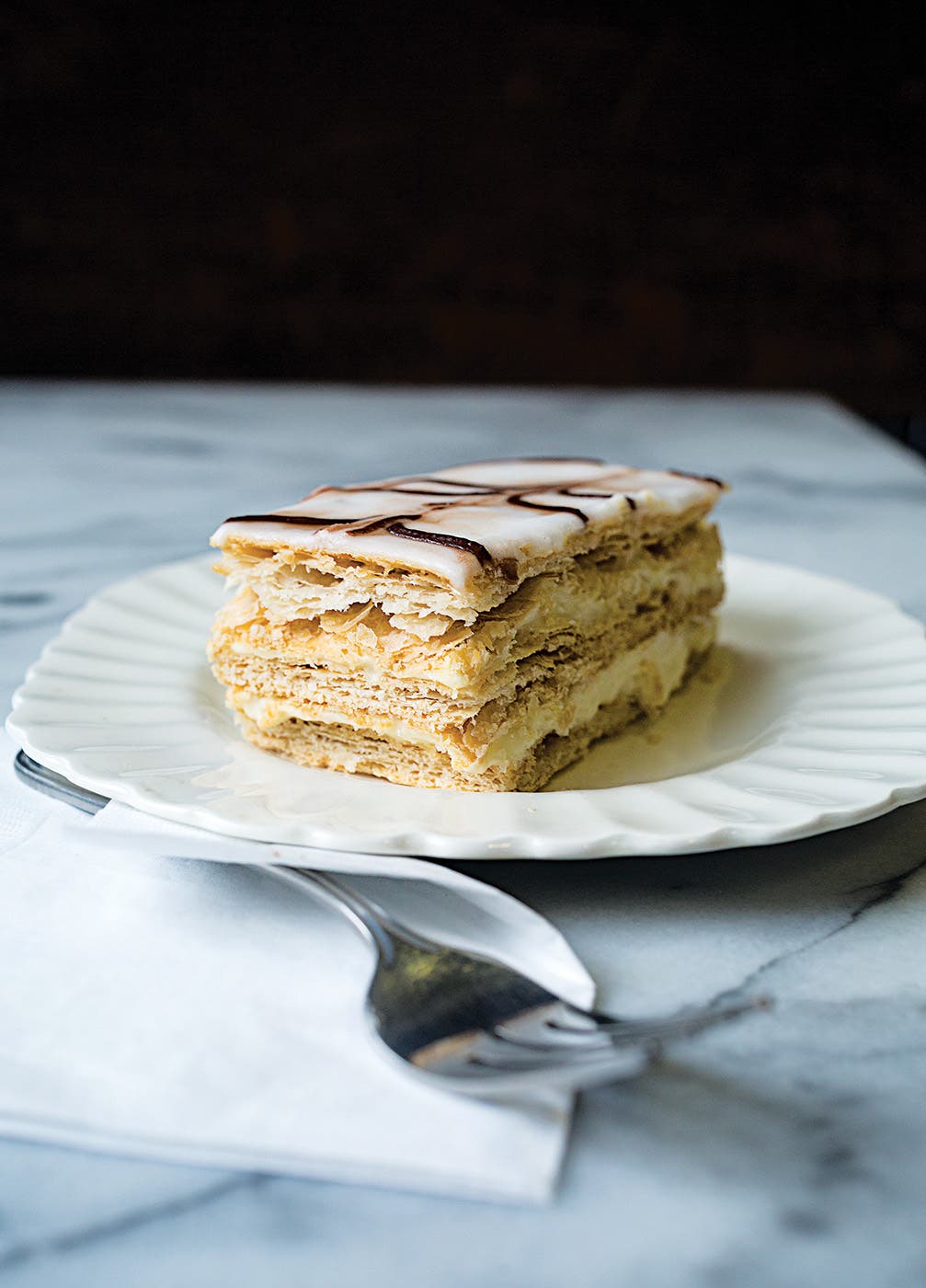
The evening is winding down at Centrál Kávéház, an opulent café. Now, beneath the chandeliers and high painted ceiling, a pair of tourists sip coffee and pore over a map, and a couple talks quietly while enjoying glasses of red wine. A plate clinks gently on my marble tabletop as the waiter sets down my reward for a long day of work: a luscious piece of krémes, my favorite pastry, and a glass of tokaj szamorodni, a sweet Hungarian white wine. Such a combination would be a rare luxury elsewhere, but in Hungary it's not unusual to indulge in a tipple and fancy dessert for no reason at all. The krémes, which is Hungary's answer to the napoleon, is a confection of unsurpassed elegance. It's a local favorite, sparking passionate debates about where the best ones can be found, and whether they should have two layers of puff pastry or three. Ribboned with thick, vanilla-scented pastry cream, it is not the sort of thing one bakes at home. Rather, when the craving strikes, we residents of Budapest head to a cukrászda(patisserie) or a kávéház(coffeehouse) to satisfy it. And the wine—redolent of dried apricots, candied orange peel, and caramel—is a Hungarian treasure. So is this café. Founded in 1887, Centrál Kávéház stayed open around the clock in its heyday, a second home for writers and artists. The fledgling communist government closed it in 1949, but in 1999, after a restoration, the café reopened and resumed its role as the kind of place that beckons you to savor a pastry and revel in the pleasure of living in this civilized city.__
Centrál Kávéház
1053 Budapest
Károlyi Mihály u. 9.
363/0382/3357_
Carolyn Banfalvi is the author of_Food Wine Budapest (Little Bookroom, 2008)._
Keep Reading
Continue to Next Story










